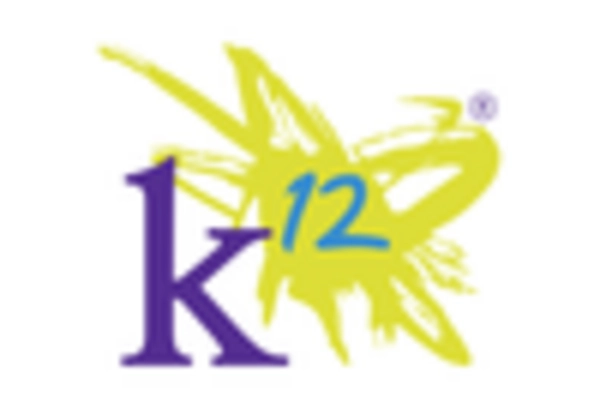Growing Emphasis on Skill Development
In the context of India's evolving job market, there is a growing emphasis on skill development, which is influencing the blended learning market. Employers are increasingly seeking candidates with practical skills and competencies, prompting educational institutions to adapt their curricula accordingly. Blended learning models that incorporate hands-on training and real-world applications are becoming essential in preparing students for the workforce. Data suggests that around 60% of employers prioritize candidates with relevant skills over traditional academic qualifications. Consequently, educational providers are integrating skill development into their blended learning offerings, ensuring that students are equipped with the necessary tools to succeed in their careers. This focus on skill enhancement is likely to drive the growth of the blended learning market as institutions align their programs with industry needs.
Rise of EdTech Startups and Innovations
The emergence of numerous EdTech startups in India is significantly shaping the blended learning market. These startups are introducing innovative solutions that enhance the learning experience, such as interactive platforms, gamified content, and personalized learning pathways. The investment in the EdTech sector has surged, with funding reaching approximately $2 billion in 2025, indicating strong investor confidence in the potential of technology-driven education. As these startups continue to innovate, they are likely to create new opportunities for blended learning, making it more engaging and effective for students. The competition among these companies is also pushing traditional educational institutions to adopt blended learning strategies, thereby expanding the market further. This dynamic environment suggests a promising future for the blended learning market as it evolves alongside technological advancements.
Rising Demand for Flexible Learning Solutions
The blended learning market in India is experiencing a notable surge in demand for flexible learning solutions. This trend is driven by the increasing need for educational institutions to cater to diverse learning preferences and schedules. As students seek more control over their learning environments, blended learning models that combine online and face-to-face instruction are becoming increasingly popular. According to recent data, approximately 70% of students express a preference for learning that allows them to balance academic commitments with personal responsibilities. This shift towards flexibility is prompting educational providers to innovate and adapt their offerings, thereby expanding the blended learning market. Institutions that successfully implement these flexible models are likely to attract a larger student base, enhancing their competitive edge in the evolving educational landscape.
Increased Internet Penetration and Accessibility
The rapid increase in internet penetration across India is a critical driver for the blended learning market. With over 700 million internet users as of 2025, the accessibility of online educational resources has expanded significantly. This growth in connectivity enables students from various backgrounds to engage with blended learning platforms, enhancing their educational experiences. Furthermore, the affordability of mobile devices and data plans has made online learning more accessible to a broader audience. As a result, educational institutions are increasingly adopting blended learning models to leverage this connectivity, thereby reaching a larger student demographic. The blended learning market is likely to benefit from this trend, as more learners gain access to quality educational content and interactive learning experiences.
Government Initiatives Supporting Digital Education
The Indian government is actively promoting digital education, which significantly impacts the blended learning market. Initiatives such as the National Education Policy (NEP) 2020 emphasize the integration of technology in education, encouraging institutions to adopt blended learning approaches. The government has allocated substantial funding to enhance digital infrastructure in schools and colleges, aiming to increase access to quality education. Reports indicate that the budget for digital education has seen an increase of over 30% in recent years. These initiatives not only facilitate the growth of blended learning but also ensure that educational institutions are equipped to meet the demands of a tech-savvy student population. As a result, the blended learning market is poised for substantial growth, driven by supportive policies and investments.

















Leave a Comment